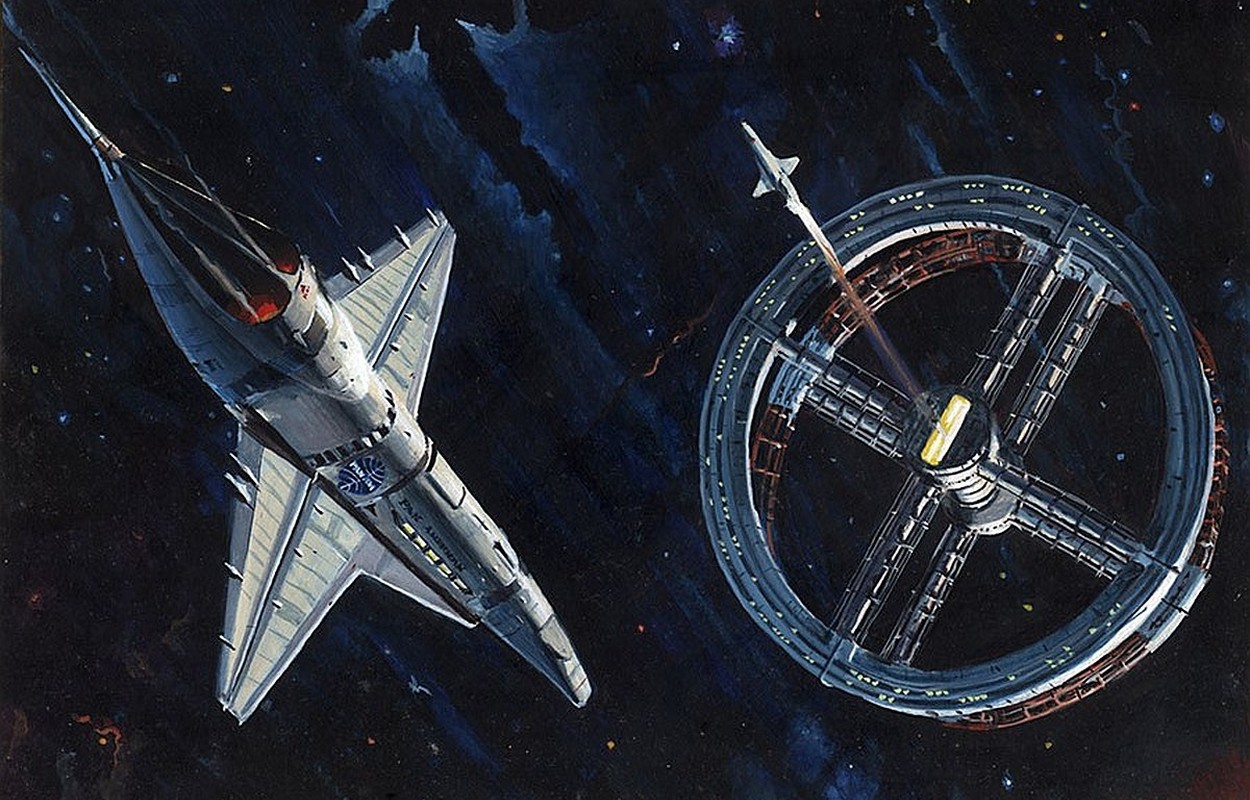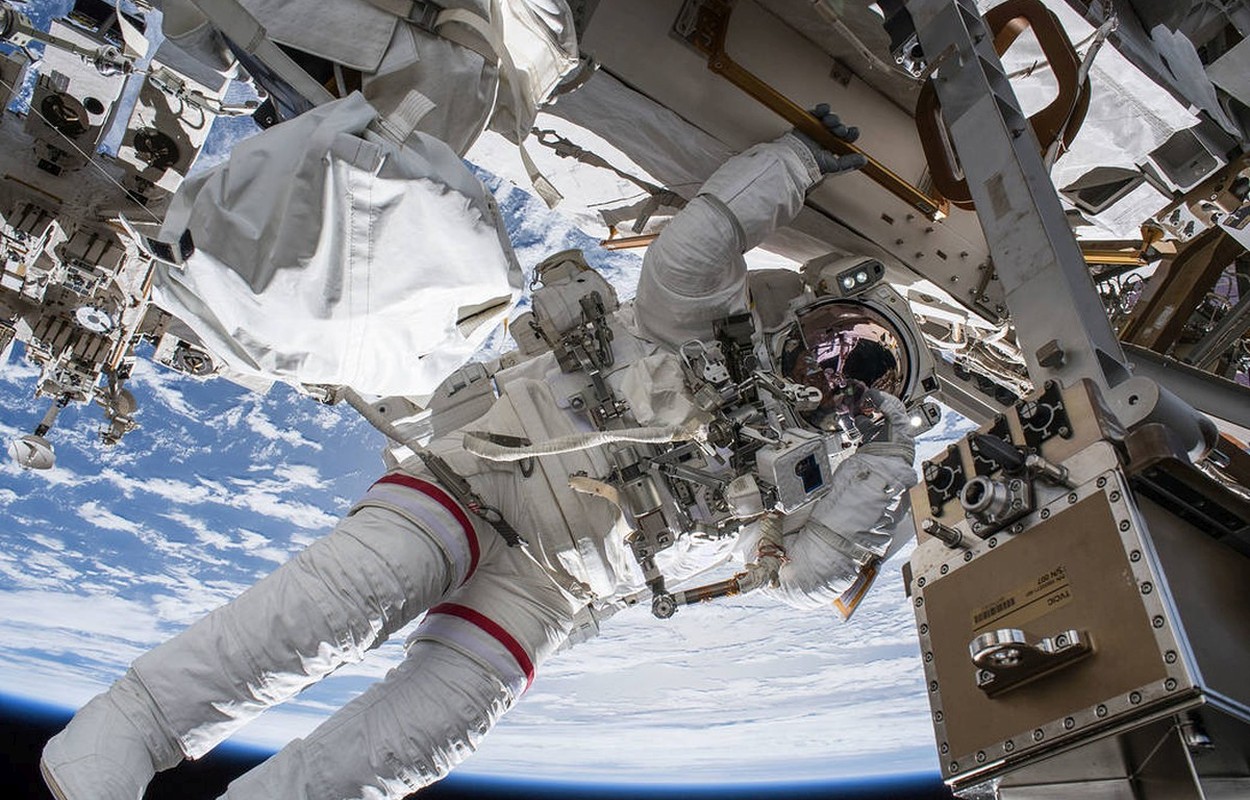

The International Space Station (ISS) is the largest structure ever built in orbit and the most complex engineering project in the Earth's history. The first main component of this 'space station' was launched into orbit in November 1998 and the first crew took up residence in October 2000. The station has been occupied continuously since then.
The ISS is primarily a science research station, studying processes in micro gravity, long term exposure of materials in space and the effects on people living in near zero gravity. It is also inspiring innovations in technology, engineering and spacecraft design.
The ISS is to large an undertaking to be funded or managed by one country. An international partnership of space agencies was therefore set up to manufacture components and provide personnel to assemble, operate and maintain the station.
The partner countries are the United States, Russia, Canada, Japan and eleven countries under the umbrella organization; the European Space Agency (ESA).🔗 The European countries are France, Belgium, Denmark, Germany, Italy, Netherlands, Norway, Spain, Sweden, Switzerland and the United Kingdom.
Each partner country has the primary responsibility to manage and run the elements it provides, including Earth support facilities.
▽ Click on a flag to open the country's space agency site in a new tab
In 1998 the main source of information was the United States NASA web site 🔗 which concentrated on the U.S. missions. It was difficult to follow and find technical details. The NASA site has improved but still lacks some technical detail.
The other major source was the Russian Energia Web site which gave details of the Russian components but was difficult to cross reference with the NASA site. Energia has improved and gives a fair amount of detail on the Russian components as well as listing all Spacecraft missions to the station.
The Wikipedia 🔗 pages on the ISS was then found to be an easier source for ongoing updates.
A combination of Wikipedia, the partnership space agencies and various enthusiast sites, has been used in the development and updating of this site.
This article is a summary of the technical aspects of the assembly and operation the ISS in orbit from 1998 to the present. The basis is a chronological list of Spacecraft missions to the station, for the delivery of components, equipment, personnel and supplies.
Summaries are also given covering the assembly activities, the main components, the spacecraft and launch vehicles used to build and operate the station. Additional pages are included with greater details of the main components.
Links are given to other articles, by rdataspace, covering details of the spacecraft and launch vehicles.
Details of personnel involved and the research done on the station are not covered in this article. these may be found in the external sites in the references at the bottom of this page.
A space station is a Spacecraft built to fly in a permanent, fixed 'Low Earth Orbit'. For example the International Space Station orbits at an altitude of about 350km. At this altitude there is still a small amount of atmosphere, sufficient to cause drag and slow the station down. As it slows the station loses altitude and slows even more. Eventually it would fall out of orbit and be destroyed.
The ISS is therefore equipped with rocket motors that can be fired periodically to boost the speed of the station and keep it in the correct orbit. Alternatively, visiting Spacecraft can dock to the rear of the station and use their motors to boost the station's speed.
A station is also designed to accommodate a crew who operate and maintain it. The crew must be kept supplied with food, water, oxygen and maintenance items. The ISS is designed for permanent occupation by two to six people. Station crews are replaced every four to six months because of the long term physical and mental effects of space flight on them.

Originally space stations were envisaged as transfer facilities. Earth to orbit shuttles would deliver people to the station and they would then be transferred to lunar or inter-planetary craft for travel throughout the solar system.
For example, in Arthur C. Clarke's "2001 A Space Odyssey", space planes transported people from Earth to a large wheel shaped space station. People were then transferred to shuttles which flew from the station to the moon.
Unfortunately space technology has not progressed to this stage yet. The space stations built so far have been designed with the primary purpose of research.
In the first instance ISS research was mainly focussed on how to build and operate the station. New developments in technology, materials, energy production and life sciences were required before the station could be built and inhabited.
Once the station was occupied some pure science research was done, even before the station was complete.
The main advantage of research on a space station is the near zero gravity. Materials, chemicals and biology behave differently in this environment to how they would on Earth. The value of this research is hard to quantify, but is believed to be considerable, especially in terms of future developments.
If people are to return to the moon or travel to the planets, space stations will be an integral part of the process. The experience gained from building and operating the ISS will be invaluable in designing these future stations.

The ISS is too large to be built on Earth and launched into orbit. The only practical method, at present, is to launch manageable sized components into orbit and assemble them there.
Building in orbit also allows the components to be lighter because they are not subject to the full force of gravity found on Earth.
Extra Vehicular Activities (EVA's) or spacewalks are often required to finalize installation.
Wikipedia: ISS, Crewed Missions, Un-crewed Missions | NASA: ISS | | Russian Space Web: ISS | Space Facts: ISS | Gunter's Space Page: ISS | Encyclopedia Astronautica: ISS